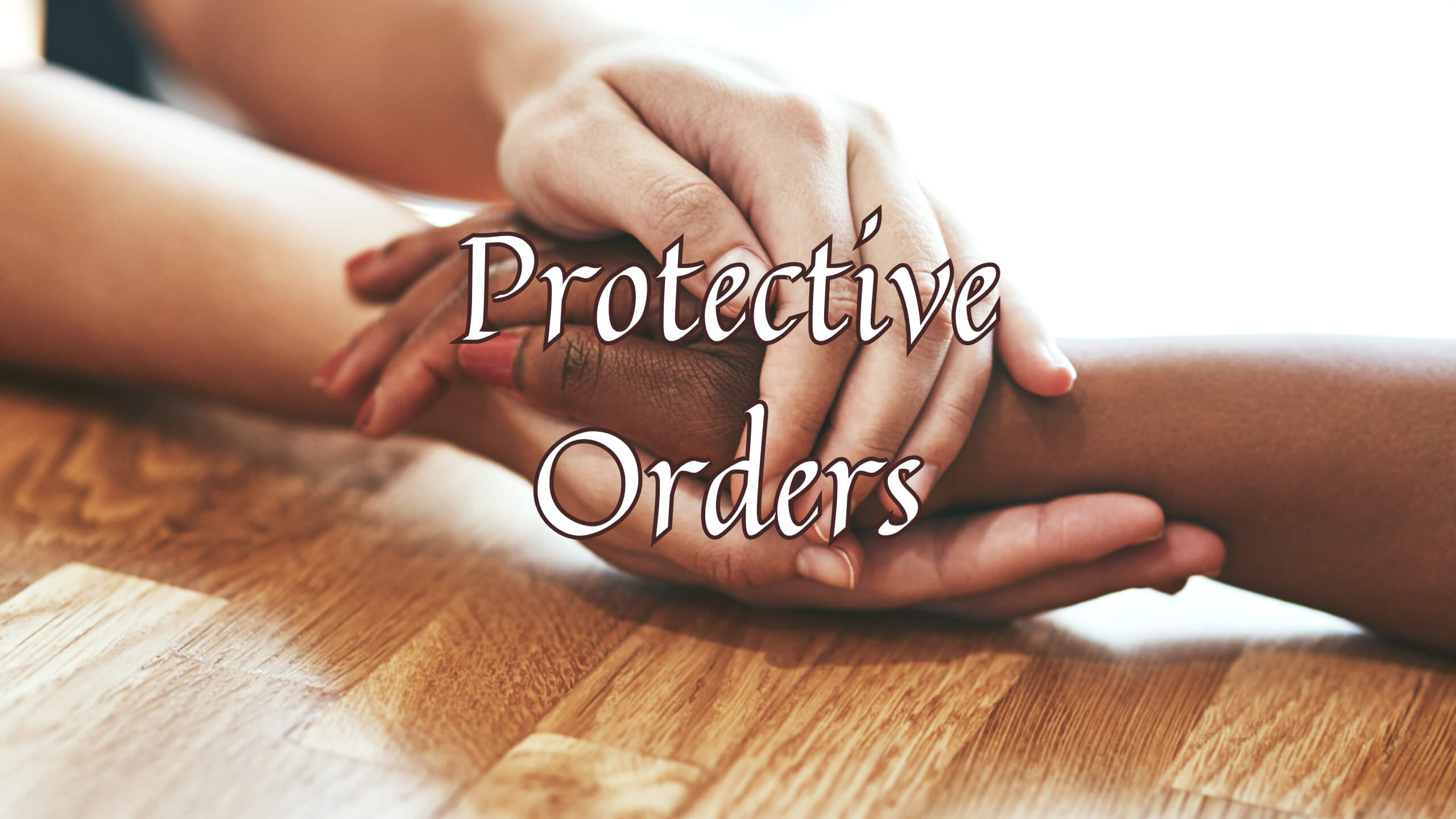Understanding Protective Orders In Massachusetts

Protective orders obtained from the Court that does not allow your abuser to contact you or abuse you can be instrumental in getting you out of an unsafe situation and protecting you and your kids from future harm.
Unfortunately, and all too often, the seriousness of what protective orders are meant to do are minimized by people who go out and get them, sometimes by lying outright and sometimes by blowing a situation way out of proportion, simply to help them get an upper hand in a divorce or custody case. This is completely wrong and something we fight very often.
In Massachusetts, there are two different types of protection orders. It’s important to understand the difference between these orders, how they work, how they can help you, or how you can fight them if you find yourself on the defense of one obtained for the wrong reasons.
TWO TYPES OF PROTECTIVE ORDERS IN MA
In the case of abuse or harassment, you have two possible avenues to get legal protection: Abuse Prevention Orders and Harassment Prevention Orders.
A judge may issue an Abuse Prevention Order (or 209A Order) in a case where you have a specific relationship with the abusive person, such as a family member, a spouse or intimate partner, or someone who lives with you. You may ask for the 209A Order when the abuser has:
- Caused or attempted to cause you serious physical harm
- Made you fear the impending risk of serious and imminent physical harm
- Forced you or threatened you into having sex
The Harassment Prevention Order (or 258E Order) is not limited to a specific relationship type. You can request the 258E Order as a result of harassment, including the following acts:
- Someone has committed 3 or more willful, malicious acts against you which intentionally caused you fear, intimidation, abuse, or damage to your property.
- Someone has forced you or threatened you into having sex at least once.
- Someone has committed one of these crimes against you at least once: indecent assault and battery, rape, statutory rape, assault with intent to rape, criminal stalking, criminal harassment, enticement of a child, or drugging for sexual intercourse.
WHAT PROTECTION ORDERS DO
Each type of protective order can help you in several different ways. For instance, a judge can order an Abuse Prevention Order that tells the abuser to stay a certain distance away from you and your children, move out of your shared home, stop contacting you, stay away from your workplace or residence, and return all shared house keys and car keys to you, to name just a few examples. With a Harassment Prevention Order, a judge can order the person to stop harassing or abusing you, stop contacting you, keep away from your home or workplace, and pay you back for financial losses stemming from the harassment (like lost earnings, medical expenses, property damage, and so on).
HOW LONG DO RESTRAINING ORDERS LAST?
First off, both types of restraining orders have sub-types to make sure you can request short-term and long-term protection.
Abuse Prevention Orders can include emergency protective orders, which can be obtained from the police department if there is an immediate danger to the Plaintiff and the court is closed; temporary or “ex parte” orders can be issued right away and are good for up to ten days while the defendant gets served and a hearing is held; long-term orders last up to one year and need to be renewed at the given date of termination; and permanent orders, which are good for life and you never have to return to court to renew or fight them.
Harassment Prevention Orders only include temporary and long-term orders.
Next Steps
To Obtain a Protection Order:
- Emergency Restraining Order: If there is a danger of immediate abuse, you can go to your local police station and ask to obtain a restraining order if the Court is not open. You will need to fill out paperwork and an affidavit explaining why you need the restraining order. The restraining order will go into effect as soon as the Defendant is served. You will be required to appear at an appropriate Court having jurisdiction over your case first thing on the next day of business.
- Ex-Parte Protective Order: If you are trying to get a Restraining Order or Harassment Prevention Order during normal business hours, you have to go to the appropriate court that has jurisdiction over your case and apply at the clerk’s office. You will generally be able to speak with a victim advocate who can help you. You will need to fill out a bunch of documents and an affidavit stating why you need the protective order. You will then need to appear before a Judge who will read your affidavit and listen to what you have to say about why you need the order. The Judge will either: (1) grant the request immediately, issue a temporary order, and set a review date that takes place within 10 days so that the Defendant can appear and explain why the order shouldn’t be extended; (2) deny the request and not schedule a hearing; or (3) schedule a hearing that the Defendant can appear and explain his or her side of the story before granting the request.
- Long-Term Order: A long-term order (up to a year in length) can only be granted by the Court after the Defendant has been served and has had a chance to appear and be heard relating to his/her defense. This is usually done by having an evidentiary hearing. Each side will tell his/her side to the Judge and then the Judge will make a determination to extend the order or deny it. You will have the chance to conduct a “cross-examination” which means you can ask the other side questions (rules of evidence apply, so you cannot just ask anything) if you want to. If the Judge grants the order, you will get a date at which you must return to either request the order be extended or fight it again, usually in about a year.
- Permanent Orders: If you have been granted at least one one-year restraining order, you can file a motion to request that the Court grant a permanent restraining order which requires proper notice to the other side and a hearing.
WHAT COURT DO I GO TO?
Harassment Protection Orders can ONLY be heard in District Court. Restraining Orders can be heard in either District Court or Family Court. If you are trying to include your children on the restraining order and there is any type of family court litigation pending, you should go to Family Court rather than District Court. You can look up what District or Family Court serves the town/county that you live in.
WHAT DO I DO IF I JUST GOT SERVED WITH A RESTRAINING ORDER?
If you get served with a protective order, be respectful to the police who are serving you – they are just doing their job. If you are getting kicked out of your home due to the order, you will have about ten minutes or less to grab some of your basic belongings. Make sure you take any medications you need with you, your laptop, your cell phone and charger, your checkbook, wallet, important paperwork, and enough clothes to last you about a week. Whatever you do, DO NOT CONTACT the person who got the protective order against you, his/her friends, or his/her family to find out what is going on. No. No. No. Block his/her number from your phone so you don’t text them by accident, butt dial them, or drunk call them. Remove his/her email from your address book for the same reason. Block them from any and all of your social media accounts, and stay as far away from him/her as possible. Then CONTACT US! Sometimes you will need to be in court the next day or in a day or two – we need as much time as possible to meet with you and start preparing your defense. TEXT: 774-703-3755 with 911, your name, and that you just got served with a protection order and one of our attorneys will call you back pretty quickly.
If you really want to make sure your restraining order petition is successful, you should enlist the help of a trustworthy attorney. The lawyers at O’Connor Family Law have years of experience filing for and fighting restraining orders.


